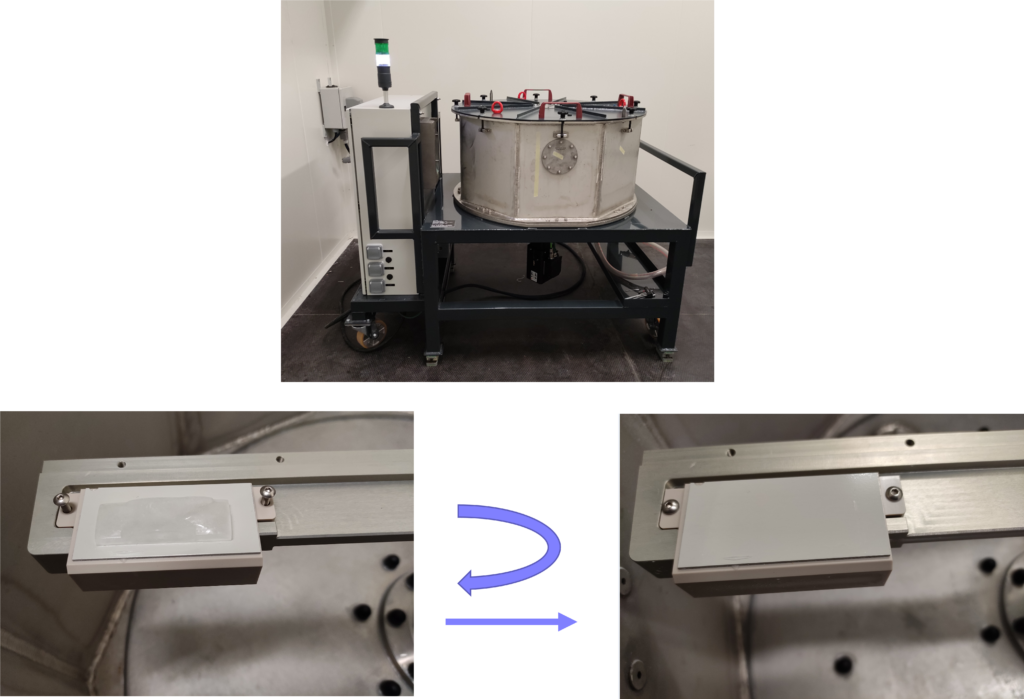FREEzING 2, encouraged by the promising results obtained from FREEzING (2019-2023), starts at the beginning of March 2024. The aim of the project is to continue the development of durable icephobic surfaces using various surface treatment processes for aeronautical applications, and to assess their performances in a representative environment close to flight test.
Project background
FREEzING (Functional, Erosion rEsistant and anti-icING coatings development) arose from the well-known need to tackle ice accretion issues during flight, which can lead to serious losses in aerodynamic performances.
The aim of the project was to develop and assess the icephobic properties of coatings produced by various surface treatment processes (dry and wet ones) for aeronautical applications. The aim was to provide long-lasting icephobic properties to the treated parts and thus limit, or even prevent, the formation and accretion of ice on aircraft.
The icing threat
Ice accretion phenomenon is a well-known issue in aeronautics, and preventing this phenomenon is a major safety risk. Uncontrolled icing on aircraft can lead to a significant loss of aerodynamic performance, with serious consequences. To date, active anti-/de-icing systems are widely deployed on aircraft to ensure that performance is maintained in all circumstances. However, these ice protective systems lead to the consumption of a large amount of energy, are difficult to integrate and could limit aerodynamic performance. The environmental impact of these ice protective systems is therefore significant.
One of the solutions being considered to limit this impact is to give the most exposed surfaces icephobic properties that prevent ice from forming or promote its detachment. Numerous studies and research projects, both past and ongoing, are focusing on this challenge.
For example, the development of hydrophobic or superhydrophobic surfaces inspired by the lotus effect (based on surface nano/micro-texturation) provide interesting icephobic performances but these solutions are unsuitable regarding the complete material specifications. Indeed, most of these surface technologies are not resistant enough with the environmental constraints encountered in flight (exposure to UV radiations, rain and sand erosion and thermal cycling in particular).
FREEzING’s objective was therefore to develop icephobic durable surfaces, resistant to the harsh environments encountered in the aerospace industry.
A project involving formulators, manufacturers and academics
The identification of a consortium made of industrial specifiers (Airbus, Liebherr, Safran), industrial formulators (Socomore, Oerlikon Balzers) and academics (ICA, IRCER, LAPLACE, LCC, IMRCP), has enabled the development and characterisation of several coatings of interest. In particular, IRT Saint Exupéry was in charge of the characterisation aspects by designing and integrating specific test benches within a new platform dedicated to icing. The surface solutions were developed on the basis of iterative (re)formulation/characterisation loops with the partners and according to a prioritisation of the industrial specifications in order to gain in responsiveness and thus move more efficiently towards the targeted performances.

More representative test for validation phases – Centrifugal adhesion test (IRT design) / Measurement of ice adhesion by centrifugal force
WHAT’S NEXT ?
As FREEzING came to an end in mid-2023, a follow-up project will start in March 2024 for a period of three and a half years with a budget of 2.5 million euros and the mobilisation of a dedicated project team at IRT Saint Exupéry. Airbus, Safran Tech, Liebherr, ICA (UPS, INSA Toulouse, ISAE-SUPAERO) and IRCER are the stakeholders in this project.
A new formulator will also join the project, SPECIFIC POLYMERS, to work on wet surface treatments (particularly paint technologies) with performance levels that meet the industrial specifications. The aim is to continue the work on durable icephobic surface treatments and to model the mechanisms of ice breakage under dynamic icing conditions.
The integration of new more representative test facilities, including an icing wind tunnel (ISAE/INSA Toulouse) installed at Institut Clément Ader, will enable us to better control the conditions of ice formation and generate different types of ice encountered in flight (rime, glaze and mixed), and thus study the behaviour of coatings in these environments. These tests are the final step before the flight test. In this project, we will also work on the combination of these surfaces with active ice protective systems (thermal, electrothermal and electromechanical). In this case, we will focus on demonstrating the energy savings provided by the functional surfaces.
Finally, with a view to increase the maturity and representativeness of the tests, Liebherr will make its certifying facility available for the project.
“The FREEzING project has enabled IRT and the project consortium to develop significant skills in various fields related to the icing issue. A good understanding of the mechanisms by which ice forms in a harsh environment was a prerequisite that enabled us to identify the best surface treatment solutions and strategies to deploy in order to achieve the targeted performances. The development of a complete experimental platform, ranging from laboratory tests for the development phases to representative tests, means that we can now accelerate development through iterative loops of formulations and characterisations,” concludes Julien Garcia, FREEzING project leader.


